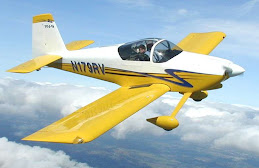Sat 8th Dec 7hr 10min
Dimpled the left elevator skin and stripped vinyl from the inside and from the rivet lines on the outside. Prepped and dimpled the E-902 and E-907. Countersunk the E-907 top flange. Made the E-921 gusset. Made trim tab clamps. Made trim tab ribs and marked their position.
The springiness of the elevator skins makes dimpling awkward. If it was not for the DRDT2, I could not have managed it alone but this dimpler leaves you with one hand for the work and it does the job without too much fuss.
Dimpling the spars was the first outing for my new small diameter dimple dies. Perhaps I could have made do without them but it's great not to have to worry about the die digging into the curve of the metal. I don't have a particular problem with the idea of grinding one side off the full-size dies but as we are only talking about $17 per die, I think it is better to have the correct tool for the job. Postage was effectively free as I had to get a replacement for the #40 countersink cutter anyway.
I have remarked before how tedious it is to set up a countersink cage for a particular rivet size. There is no calibration so it is a trial and error process that takes a lot of time and care to get it right. Even now, having done it three or four times, it still takes 15 minutes or more each time. Some builders recommend getting three countersink cages and leaving one permanently set up for #40, a second for #30. The third is then used for any other sizes that crops up. This would save a lot of time. I think it is worthwhile so I will order two more cages the next time I need something from Avery or Isham.
Making the E-921 gusset was not a problem. I don't have a deadblow hammer so I used a normal hammer with a piece of wood scrap against the metal. I did the bending in my vice, to which I have fitted wooden jaws. While I was fitting out the shop before the kit arrived, I had looked for soft jaws from a number of local tool shops but couldn't find them so eventually I made some from teak scraps and fitted them in place of the metal ones. The teak is hard enough to get a firm grip but I have never noticed any marks on metal pieces that come out of the vice.
I decided to postpone the drilling of the trailing edge for the moment. I may wait until the remainder of the elevator is riveted. If I do that I will have to prime the wedge extrusion on its own as all the other pieces will already have been primed but I feel I will get a better result if the structure is already stiffened up before I set the trailing edge.
 The band saw was very useful for cutting out the V clamps for the trim tab as well as the foam ribs. I don't bother changing back to a timber saw blade for these small jobs. The metal blade does a good job if you give it plenty of time. The belt sander made quick work of tidying up the foam ribs but I had to use sandpaper for the clamps. I finished up the day by marking the location where the ribs will go inside the skin of the trim tab.
The band saw was very useful for cutting out the V clamps for the trim tab as well as the foam ribs. I don't bother changing back to a timber saw blade for these small jobs. The metal blade does a good job if you give it plenty of time. The belt sander made quick work of tidying up the foam ribs but I had to use sandpaper for the clamps. I finished up the day by marking the location where the ribs will go inside the skin of the trim tab.

No comments:
Post a Comment